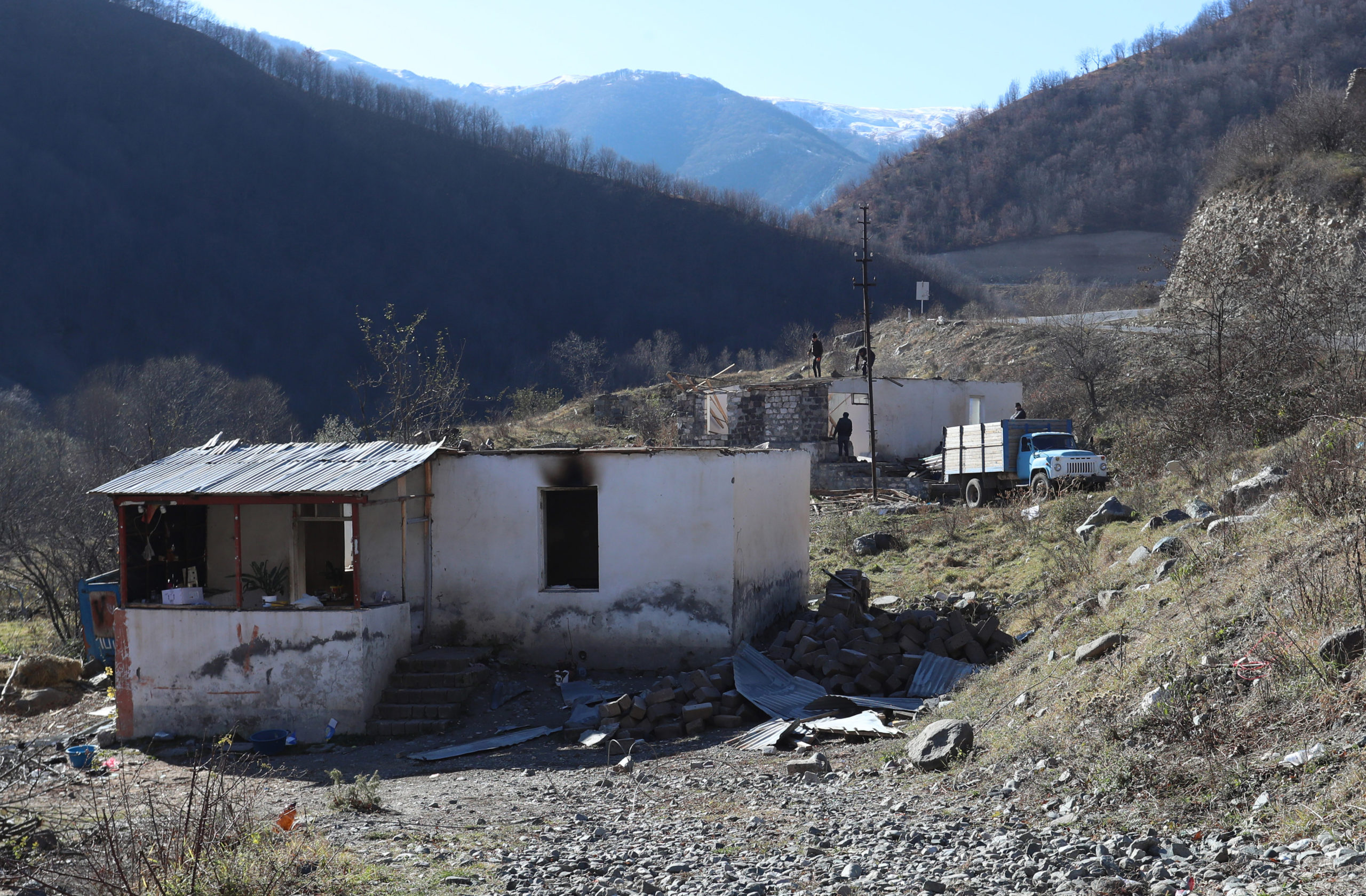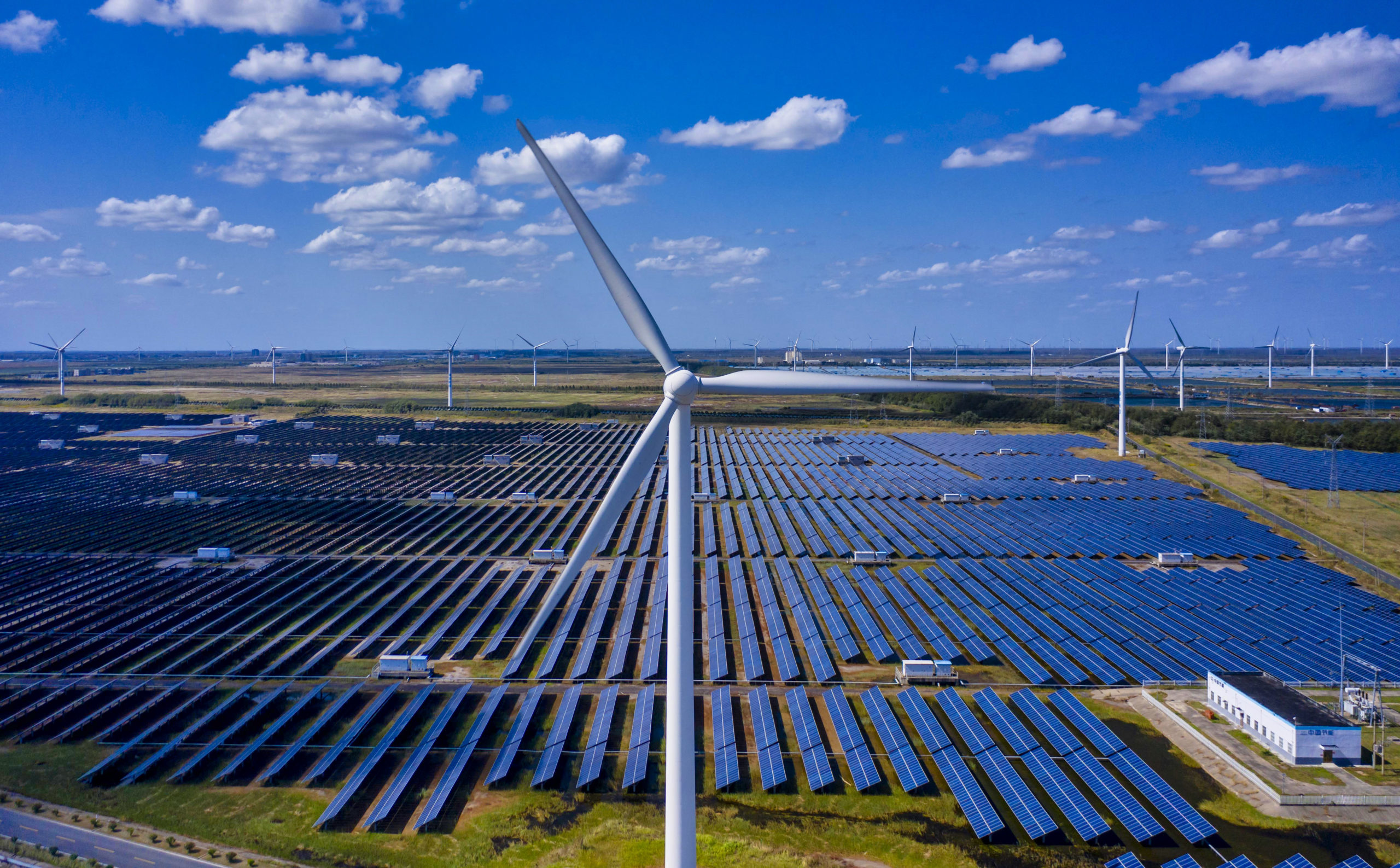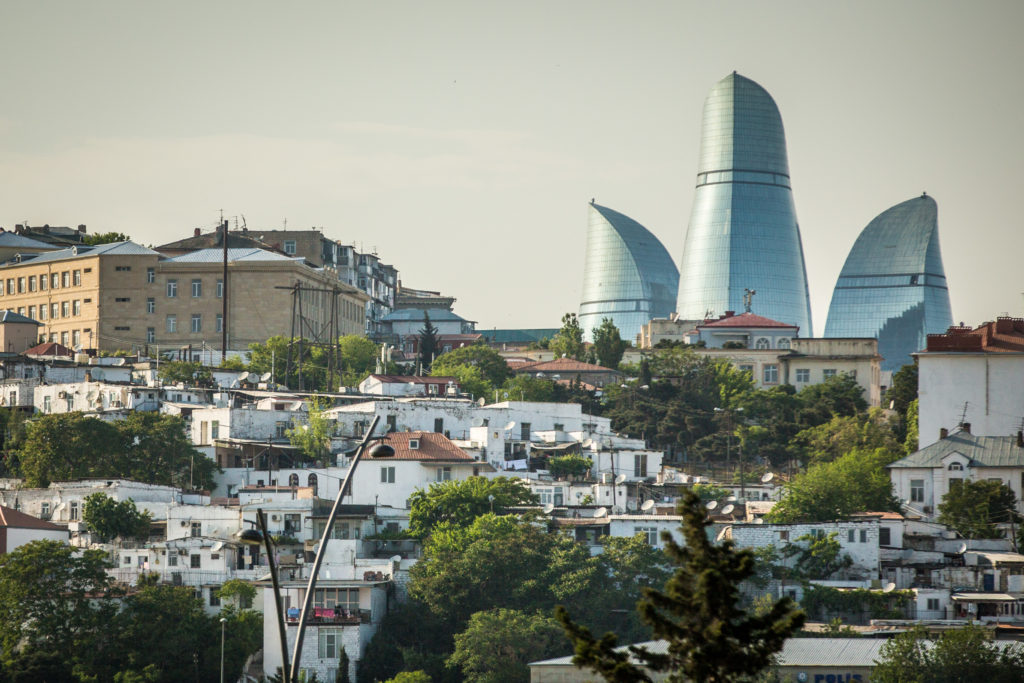By THE TRIBUNE staff
BAKU
Azerbaijan, a land inextricably associated with crude oil and natural gas exports, is declaring a major move to renewables like solar and wind.
Though officials cite their reasoning based on reducing greenhouse emissions – and Azerbaijan is a signatory to the Paris accords – a slow but gradual decline in oil and gas export revenues makes the transition a necessity.
Almost all production and exports come from offshore Caspian fields. On-shore production was mostly depleted in Soviet times.
The government of President Ilham Aliyev has set a target that 35 percent of all electrical generation should come from renewables by 2030, up from 8 percent now. About 90 percent is from gas-fired plants, constraining exports.
Several recent deals with foreign firms illustrate the need for renewables.
UAE-based Masdar, an international renewable major, last week signed a $220 million investment deal for a major solar farm just north of Baku.
On February 22, the government, and British Petroleum (BP) signed a Memorandum of Understanding on “decarbonisation” of the Azerbaijan energy sector and the development of renewables. BP, itself looking for expanded renewable opportunities worldwide, has been a primary partner in the country’s numerous oil and gas consortium projects since 1994.
Saudi Arabia’s ACWA and Azerbaijan signed an agreement at the end of 2020 to jointly develop 240-megawatts worth of wind energy projects in two regions particularly favourable for this sector.
Azerbaijan is also actively looking far forward to hydrogen fuel exports, said a high-ranking source at state oil company SOCAR.
“We are discussing this with our European partners. It is not an easy process, and these studies will take time,” the source told The Tribune. It is common practice in the country for ranking officials to comment on the condition of anonymity.
The country’s oil and gas revenues were a major factor in weapons procurement and thus its lightning victory over Armenia in a 44-day blitzkrieg in late 2020. This effectively ended a 30-year war and ended Armenian’ forces long occupation of major tracts of Azerbaijan’s territory.

President Aliyev has declared the de-occupied territories, looted and destroyed during the occupation, will be rebuilt – an undertaking expected to take years – using only renewables for the basis of their electrical infrastructure.
“[de-occupied] Kalbajar and Lachin have great potential in the field of wind energy, and in [de-occupied] Zangilan – solar energy. Orders have been made to study the issues with foreign partners. We have declared Karabakh a “green energy zone” and are waiting for proposals from investors,” President Aliyev stressed.
Nearly half of all Azerbaijan’s budget revenues are now derived from oil and gas exports. But the government wants to use renewables to bolster its natural gas and raw electrical exports. Thus, it could use its natural gas for more lucrative purposes, rather than for heavily subsidised electrical production.
OIL AS HISTORIC LIFEBLOOD
Relatively recent oil and gas development contracts, which took off in the mid-1990s, defined the country as synonymous with “black gold” and attracted floods of would-be investors.
Ancient scholars who visited the area around present-day Baku recorded seeing residents using crude oil, which often seeped from the ground, for lamps and fires. Natural gas (essentially methane) occasionally leaks from many areas.
The first oil pipeline in the world was constructed from Baku to the Black Sea coast in the late 19th century. Baku itself became a haunt of magnates like Nobel and Rothschilds. They built stately mansions and neo-classical buildings which to this day define the city centre while they invested in local oil wells.
At the peak of World War II, present-day Azerbaijan produced over 70 percent of Soviet crude oil. It was vital for the allied war effort.
This made it a key target of Nazi campaigns, though Hitler failed to take it.
Azerbaijan is hardly abandoning oil or natural gas development projects. At the end of 2020, the last major leg of the Southern Gas Corridor (SGC), was completed, linking Baku all the way to Italy. That line had already been supplying Turkey with natural gas. The final leg of the line crosses under the Adriatic to southern Italy and the EU.
An expansion of the SGC’s capacity is the subject of a planned government tender in 2021 aimed at international investors.
ABUNDANT SUN, WIND POTENTIAL
Despite the country’s oil-and-gas driven economic legacy, Azerbaijan is well-positioned to harness reliable wind and solar resources.
IRENA – the International Renewable Energy Agency – said in a recent report that despite its reliance on oil and gas, “the country has excellent wind and solar resources, along with significant prospects for biomass, geothermal and hydropower development.”
Much of the country basks in sunshine most of the year or is comprised of semi-arid steppe areas.
Other places are buffeted by sustained high winds, including areas along the Caspian shore.
Baku itself is known as the “City of Winds” – a term taken from an ancient Persian term meaning “pounding winds”. The phenomenon not only cleanses the air in many industrial areas from pollutants. It also keeps the capital relatively comfortable during summer days, despite frequent 40C temperatures.

The government is preparing to further enshrine renewables development as part of official doctrine. It is preparing to introduce a law “On the Use of Renewable Energy Sources in the Production of Electricity” to the Milli Majlis, or parliament, which is dominated by President Aliyev’s New Azerbaijan Party.
The law was drafted with consultations with European experts, in particular the European Bank for Reconstruction and Development (EBRD). Aliyev has stressed the need for involvement by European companies.
Azerbaijan, which during the Soviet period simply let natural gas from oilfields escape into the atmosphere says it is on track to eliminate all such emissions in 2023. It has been gradually using capture technology to curtail the emissions – or alternatively – the practice of “flaring off” gas.
A project to capture gas escaping or being flared off from more than 60 existing offshore wells from one field alone began in 2018 with an agreement signed with the United Nations Development Fund (UNDP).
Methane has 20 times the power of carbon dioxide as a greenhouse gas.
The UNDP-Azerbaijan project also helped spur the installation of six wind turbine facilities.
With high mountain ranges and an abundance of rivers, Azerbaijan also has untapped hydroelectric potential.
It plans to refurbish approximately 30 smaller hydro stations which fell into disrepair in recent years due to the Armenian occupation or proximity to front lines.
It has already begun work on several along the frontier with Iran.
Some analysts, like Ilham Shaban, head of the Independent Centre for Oil studies, say there are still many questions about renewables in Azerbaijan. He said that many oil and gas reliant countries have embarked on such projects “to keep up with global trends”, and that they often were “expensive toys”.
But given the priority the government is now giving to develop renewables, the intent seems more driven by practicality than window-dressing.

